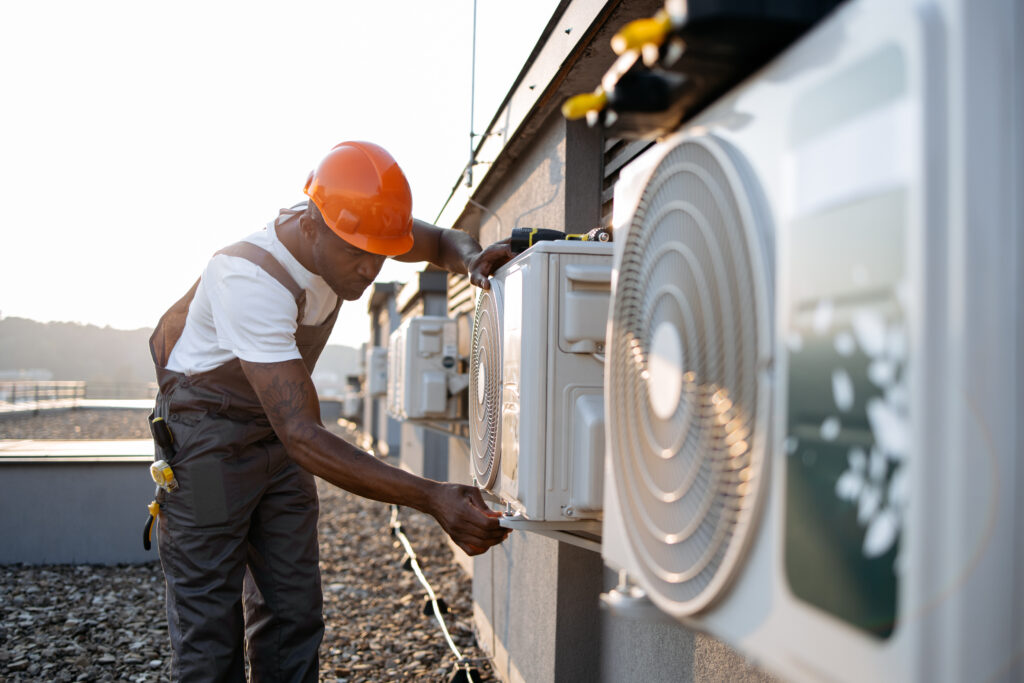An air conditioning system is essential for maintaining comfort in your home, especially during the hot summer months. However, like all mechanical systems, air conditioners have a finite lifespan and will eventually require replacement. Understanding when it’s time for a replacement and navigating the process can seem daunting, but it doesn’t have to be.
Knowing the signs that indicate your AC unit may need replacement can save you from unexpected breakdowns and costly repairs. Additionally, making informed decisions about the type of unit to install and understanding the steps involved in the installation process will ensure that your home remains comfortable and efficient.
Signs It’s Time for an Air Conditioner Replacement
It can be difficult to know when it’s time to replace your air conditioner rather than repair it. Recognizing the signs early can save you from unexpected breakdowns and expensive repairs. One key indicator is the age of your unit. Most air conditioning systems last between 10 to 15 years. If your unit is within this age range or older, it might be time to consider an air conditioner replacement.
Another sign is frequent breakdowns and the need for constant repairs. If you find yourself calling for air conditioning repair services more often than not, replacing your AC unit may be a more cost-effective solution. High energy bills can also indicate that your air conditioner is not functioning as efficiently as it should. Older units or those needing frequent repairs often consume more energy, which can be a drain on your finances.
Inconsistent cooling and unusual noises also signal that your AC system is struggling. If certain rooms in your home are cooler or warmer than others, or if you hear strange sounds such as grinding or squealing, these could be signs of significant issues. Consulting with our professionals can help you determine whether an air conditioning replacement is necessary.
Choosing the Right AC Unit for Your Home
Selecting the right air conditioner for your home is a crucial step in the replacement process. The first factor to consider is the size of the unit. An improperly sized unit can lead to inefficiency and discomfort. A unit that is too small will struggle to cool your home, while one that is too large will cycle on and off too quickly, wasting energy. Our professionals can perform a load calculation to determine the ideal unit size for your home.
Energy efficiency is another important consideration. Look for units with high Seasonal Energy Efficiency Ratio (SEER) ratings, as these tend to be more efficient and cost-effective over time. While higher-rated units may have a higher upfront cost, they typically result in lower energy bills and better performance.
You should also consider the type of air conditioning system that best fits your needs. Central air conditioning systems are common for whole-home cooling, but other options like ductless mini-split systems might be suitable for specific situations. Our technicians can help you explore these options and make an informed decision. Additional features, such as smart thermostats and air quality enhancements, can also add value and comfort to your air conditioning installation.
Choosing the right air conditioner involves several important factors, including size, efficiency, type, and features. By working closely with our professionals, you can ensure that your air conditioning replacement meets your specific needs and provides lasting comfort for your home.
The Installation Process: What to Expect
Understanding what to expect during the air conditioning installation process can make the experience smoother and less stressful. First, our professionals will perform an assessment to ensure your home is ready for the new unit. They will check the existing ductwork, electrical connections, and any other infrastructure that might need updating or modifications.
On the installation day, our technicians will carefully remove the old AC unit. This step ensures that no damage occurs to your home during the transition. The new air conditioner is then positioned and installed according to the manufacturer’s specifications. Our team pays close attention to aligning and securing the unit to guarantee optimal performance and longevity.
Once the unit is in place, our professionals will connect it to your home’s ductwork and electrical system. They will also test the system to make sure it is running correctly. This includes checking for proper airflow, verifying thermostat settings, and ensuring that all components are functioning as they should. Before leaving, our technicians will explain any maintenance tips and answer any questions you might have about your new air conditioning system.
Post-Installation Tips for Optimal Performance
After your new air conditioning installation is complete, there are several steps you can take to ensure it continues to run efficiently. First, it is essential to change the air filters regularly. Dirty or clogged filters can impede airflow and strain your system, leading to potential breakdowns and reduced efficiency.
Secondly, schedule regular AC service appointments to keep your unit in top shape. Our professionals can perform routine checks and maintenance to prevent any minor issues from becoming significant problems. This proactive approach can extend the life of your air conditioner and maintain its efficiency.
Additionally, keep the area around your air conditioning unit clear of any debris or obstructions. This includes trimming back any plants or shrubs that might block airflow to the outside unit. It’s also a good idea to invest in a programmable thermostat to help regulate temperatures more efficiently and reduce energy consumption.
By following these post-installation tips, you can ensure that your new air conditioning system operates efficiently and effectively for years to come. Regular maintenance and a few simple precautions can make a significant difference in the performance and longevity of your air conditioning unit.
Conclusion
Navigating the air conditioner replacement process doesn’t have to be challenging. By recognizing the signs that it’s time for a replacement, choosing the right unit, understanding the installation process, and following post-installation tips, you can ensure a smooth transition and enjoy optimal performance from your new air conditioning system.
For expert assistance with your AC replacement in Phoenix, trust our experienced team at Diamond AC & Heating. Contact us today to schedule your consultation and learn more about our comprehensive air conditioning services.
















